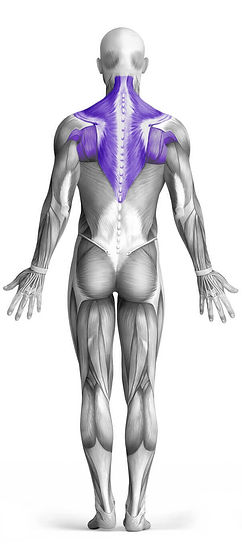Dumbbell One Arm Bent-Over Row 101 Video Tutorial
0

Exercise Synopsis
Target Muscle Group
Upper Back
Execution
Compound
Force Type
Pull
Required Equipment
Dumbbell
Fitness Level
Intermediate
Variations
Alternatives
None
Timer
Hour
Minute
Second
Stopwatch
00:00:00:00
Overview
The Dumbbell One Arm Bent-Over Row is an effective strength exercise primarily targeting the upper back, with secondary engagement of the biceps and lats. This unilateral movement involves holding a dumbbell in one hand while bent over at the waist, and then pulling the weight upwards towards the torso in a controlled motion. It helps develop the muscles of the upper back, improving posture and strength, while also activating the biceps and lats as stabilizing muscles during the pulling phase. The exercise requires a single dumbbell and focuses on balance, coordination, and muscle activation on each side of the body independently.
How to Perform
Start by holding a dumbbell in your left hand. Position your right knee and right hand on the edge of a bench, ensuring that your body is stable. Place your left foot flat on the floor, slightly apart from your right knee, maintaining a balanced stance.
Engage your core by drawing in your ribs and maintaining a neutral spine. Keep your back straight to avoid any unnecessary strain during the movement.
Firmly press your right hand into the bench, establishing a solid foundation. Begin the rowing motion by pulling the dumbbell upward, directing your elbow towards your hip. Visualizing the movement as if your elbow is drawing a line along your body may help with proper form.
Continue to row the dumbbell until your upper arm reaches parallel to the floor, ensuring a controlled and smooth motion. Once at the top, slowly lower the dumbbell back to the starting position with the same level of control. Repeat the movement for the desired number of repetitions.
★ Bonus: For exercises that involve external weights (such as dumbbells, barbells, or machines), the One Rep Max (1RM) calculator can help you estimate your maximum lifting capacity. Use it to track your strength progress and adjust your training for optimal results.
Tips
Focus on squeezing your back muscles at the top of the movement for better muscle activation.
Keep your shoulder blade engaged during the row to ensure you're targeting the upper back effectively.
Maintain a slow, controlled descent to maximize the time under tension for your muscles.
How Not to Perform
Avoid Using Momentum: Do not swing or jerk your body to lift the weight. Focus on controlled, smooth movement to engage the target muscles fully. Using momentum will reduce muscle activation and can lead to unnecessary strain on your back.
Don’t Overextend the Elbow: Avoid locking your elbow at the top of the movement. Keep a slight bend in your elbow to maintain tension on the back muscles throughout the entire range of motion.
Don’t Round Your Back: Maintain a neutral spine throughout the exercise. Avoid rounding your back, which can put excessive stress on your lower back and increase the risk of injury. Instead, engage your core and keep your chest lifted.
Avoid Using Too Much Weight: Don’t choose a dumbbell that’s too heavy to control. Lifting a weight that you can’t control properly forces you to compromise form, which can lead to muscle imbalances or injuries. Select a weight that allows you to maintain form with each rep.
Don’t Let Your Shoulder Shrug: Keep your shoulder blade down and back rather than letting your shoulder shrug up toward your ear. Engaging the scapular muscles ensures proper back activation and prevents unnecessary strain on the neck and shoulders.
Don’t Neglect the Negative Phase: Lower the dumbbell slowly and with control. Avoid dropping the weight quickly, as this reduces the time under tension, which is essential for effective muscle growth and injury prevention.
Avoid Twisting Your Torso: Keep your torso stable throughout the movement. Do not rotate your body as you row the weight, as twisting can strain your spine. Focus on pulling with your arm and back muscles, not by twisting your upper body.
Don’t Forget to Breathe: Avoid holding your breath during the exercise. Inhale as you lower the dumbbell and exhale as you pull it towards your waist. Proper breathing helps maintain core stability and reduces unnecessary tension in your body.
Variations
Variations of fitness exercises refer to different ways of performing a specific exercise or movement to target various muscle groups, intensities, or goals. These variations aim to challenge the body differently, prevent plateaus, and cater to individuals with varying fitness levels.
Alternatives
Alternative exercises in fitness refer to different movements or activities that target similar muscle groups or serve the same training purpose as the primary exercise. These alternative exercises can be used as substitutes when the original exercise is unavailable or challenging to perform due to various reasons such as equipment limitations, injuries, or personal preferences.








